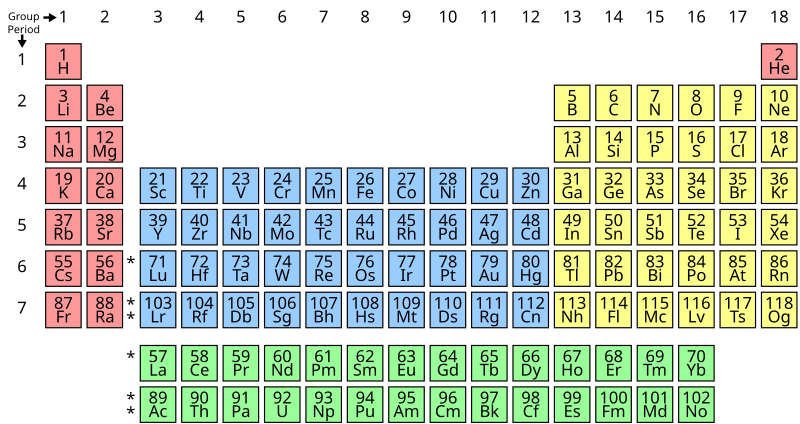
Terrence Howard’s Quest To Rebuild The Periodic Table: An Innovative Idea Or A Misguided Pursuit?
Terrence Howard proposes a new periodic table model based on elements' frequencies, linking sound, light, and matter in a unique approach to chemistry.
Terrence Howard, known for his role as “Iron Man’s” James Rhodes, has proposed a fascinating reimagining of the periodic table. He believes that the conventional table doesn’t fully capture the true relationships between elements. Howard suggests that a new framework, incorporating frequencies and tonal relationships, could reveal deeper connections in the natural world. His ideas blend principles of sound, light, colour, and even vortex theory, raising questions about whether his vision could offer a new lens on matter or if it risks straying into pseudoscience.
Howard’s Theory: Elements as Frequencies
According to Howard, each element has its unique “tone” or frequency, akin to musical notes on a scale. For example, he claims hydrogen and carbon share the same musical “key” but differ in specific frequencies, such as silicon at 162 Hertz and cobalt at 324 Hertz. He suggests that these tones correspond to wavelengths, potentially audible, allowing a unique perspective where elements are interlinked by their vibrational qualities. Howard’s theory suggests that light, sound, and matter are interconnected, with each element potentially representing a distinct octave within a greater cosmic scale.
Potential Benefits: A New Approach to Chemistry?
- A New Lens on Elemental Relationships: Howard’s ideas could offer fresh insights, potentially inspiring new research into the acoustic properties of elements.
- Interdisciplinary Connections: Blending concepts from sound, light, and chemistry may encourage a holistic approach that could yield discoveries in fields like material science, acoustics, or even alternative energy.
- Expanding Beyond Traditional Models: The current periodic table is effective but rigid; Howard’s proposition could broaden perspectives in scientific communities, potentially leading to innovations in understanding atomic behaviour.
Walter Russell’s Vortex-Based Periodic Table: An Influence on Howard
Howard’s ideas are partly inspired by Walter Russell, a philosopher who proposed a circular, vortex-like periodic table as an alternative to Mendeleev’s. Russell’s table positions elements in a spiralling pattern, emphasizing energy flow and cyclical relationships. Howard believes this model aligns with his perspective on elemental frequencies and the vibrational “tone” of each substance, suggesting a more interconnected view of atomic structure that contrasts with traditional linear arrangements.
Concerns and Criticisms: Scientific Validity at Risk?
- Lack of Empirical Evidence: Howard’s theory, while imaginative, lacks experimental validation and diverges significantly from accepted atomic theory.
- Pseudoscientific Risks: Associating elements with musical notes and “tones” could be seen as pseudoscientific, with concepts like “bisexual tones” and frequency-based bonding raising red flags within scientific communities.
- Complexity without Clarity: The idea of elements bonding through “sounds” or frequencies might overcomplicate chemical principles, deterring scientists from taking the theory seriously without clear mathematical backing.
Elements, Octaves, and Molecular Bonds
Howard goes further by assigning “octaves” to elements, grouping them within a frequency-based scale. He labels carbon as a “bisexual tone” because of its balance between positive and negative charges, which he says allows it to form stable, versatile bonds. Howard suggests that introducing elements with specific frequencies, such as beryllium, could break molecular bonds—for example, in water. He also observes that fluorine and lithium form bonds naturally, with fluorine energetically breaking apart bonds to create new compounds.
Possible Implications: Practical or Problematic?
- Potential to Discover New Reactions: If elements could interact on a vibrational level, novel reactions might be discovered, potentially opening doors to new chemical processes.
- Enhanced Material Manipulation: In fields like nanotechnology, Howard’s ideas could hypothetically lead to sound-based methods of altering material properties.
- Unproven Theories: This approach challenges fundamental principles of chemistry, which are well-supported by decades of empirical evidence, and risks being dismissed if not backed by rigorous testing.
Final Thoughts: A Visionary or Unviable Idea?
While Howard’s theory is undeniably creative, it faces significant challenges within the scientific community. Although alternative theories can spur innovation, the lack of evidence for elemental “tones” and frequency-based bonding renders this approach speculative at best. His ideas, however, highlight the potential for interdisciplinary research, where chemistry could intersect with physics, acoustics, and even philosophy. Whether his proposal will inspire practical advancements or remain a curiosity depends on future exploration, validation, and perhaps a blend of scientific rigor and open-mindedness.
Conclusion
Terrence Howard’s attempt to rethink the periodic table exemplifies the tension between established science and visionary ideas. While his theory may seem far-fetched, it serves as a reminder of the importance of questioning conventions. If anything, his ideas could encourage scientists to explore alternative models—even if only to reaffirm the value of Mendeleev’s tried-and-true design.
* * *
NEXT UP!
The Flight That Landed After 35 Years With 92 Skeletons On Board
Throughout the history of aviation, there have been countless incidents of airplanes vanishing without a trace, leaving behind unanswered questions and fueling our fascination with the unknown.
Now, most of the time, these disappearances can be explained by things like bad weather, technical problems, or just plain old human error.
“But every now and then, there are cases that make you think there’s something more going on. And that’s where the Santiago Flight 513 comes in.“
* * *
READ MORE: Scientists Terrifying New Discovery of Malaysian Flight 370 Changes Everything!
Fascinating! “I’m A Time Traveller From The Year 2345, I’m So Sorry For What’s Coming”
Telegram: Stay connected and get the latest updates by following us on Telegram!
We’d love to hear from you! If you have a comment about this article or if you have a tip for a future Collective Spark Story please let us know below in the comment section.


Could rethinking the periodic table through frequencies and sound reveal hidden connections between elements?